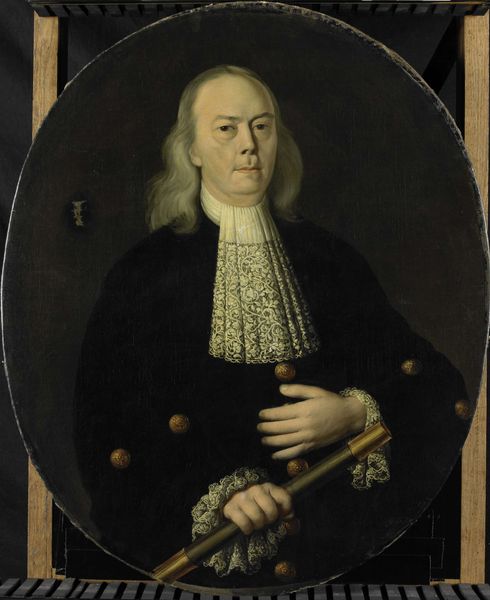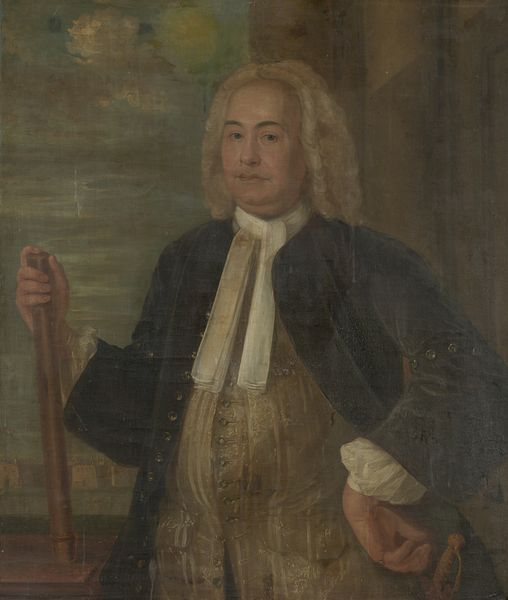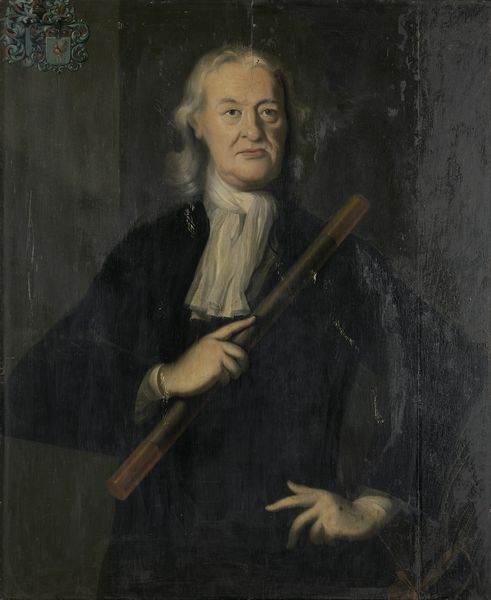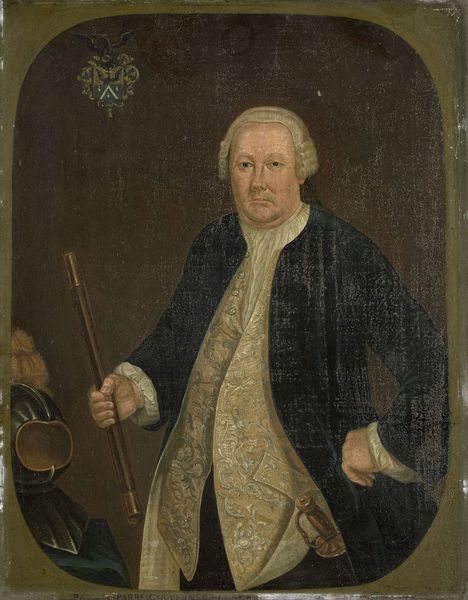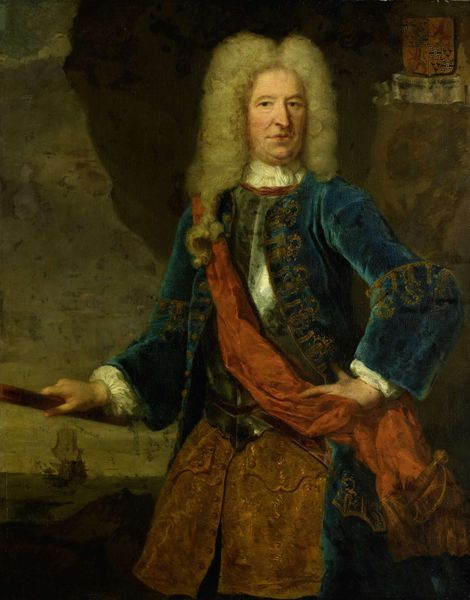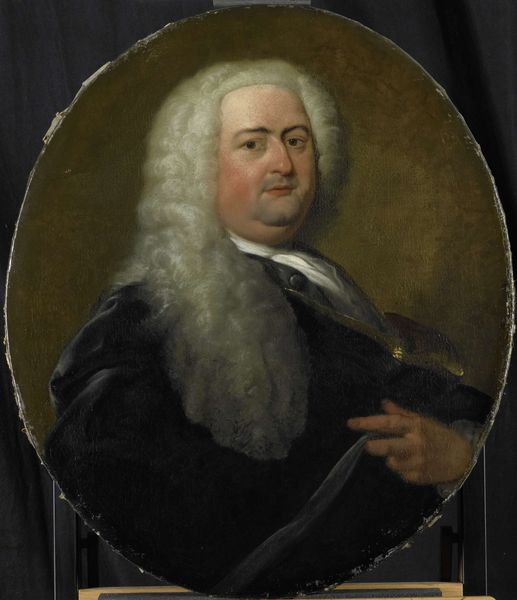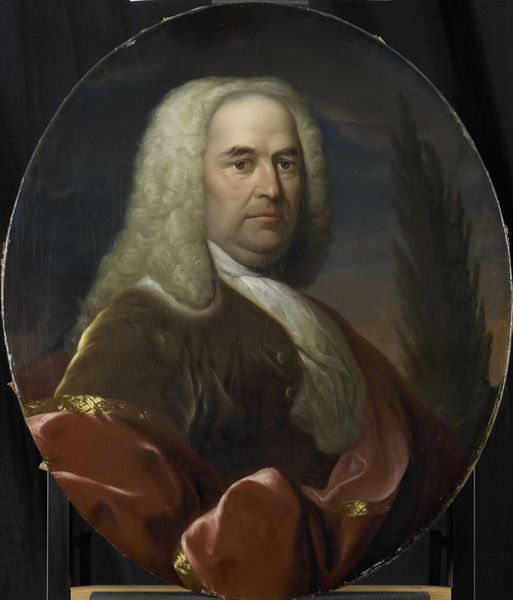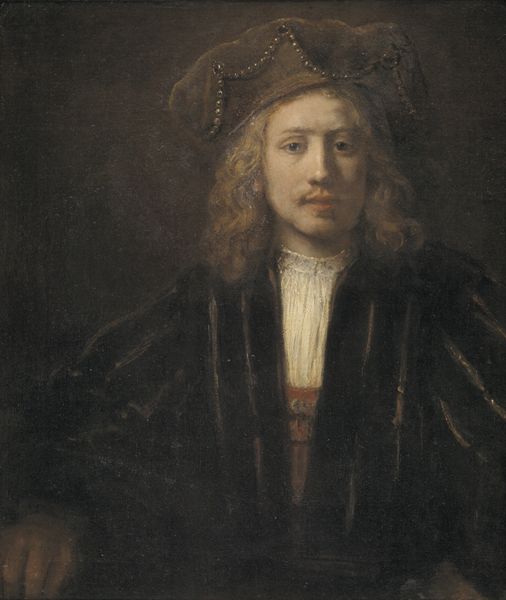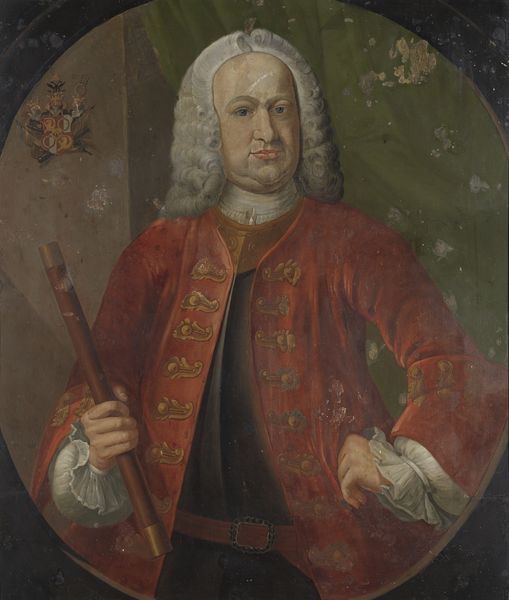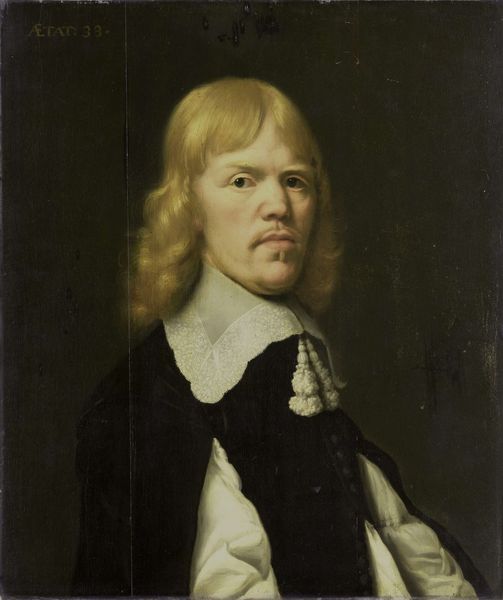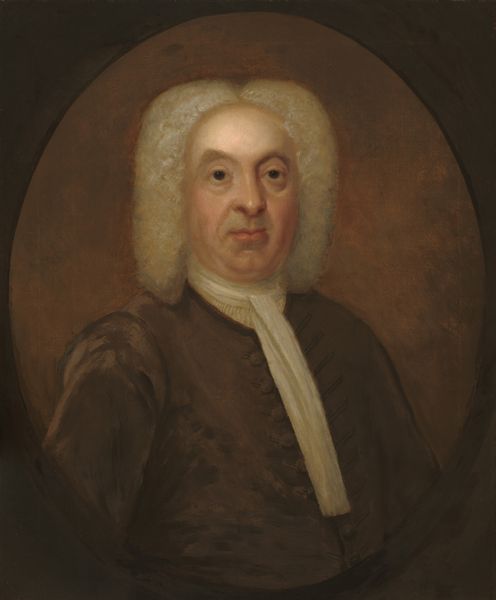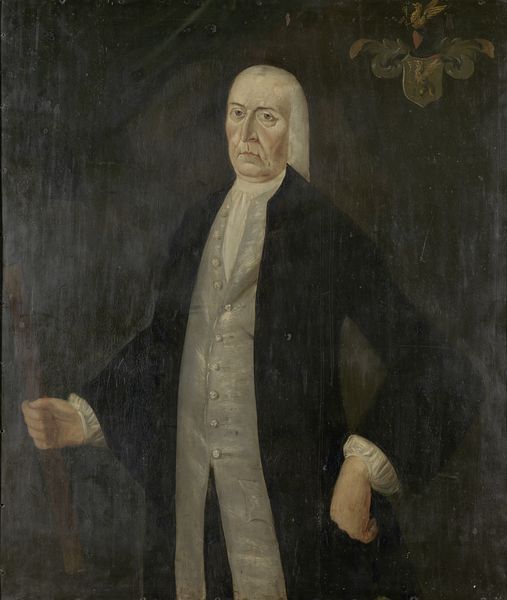
painting, oil-paint
#
portrait
#
baroque
#
painting
#
oil-paint
#
figuration
#
history-painting
#
academic-art
Dimensions: height 89 cm, width 80.5 cm
Copyright: Rijks Museum: Open Domain
This portrait of Abraham van Riebeeck, likely painted between 1709 and 1713, presents us with a rich array of symbols tied to status and intellect. The telescope, held firmly in his hand, speaks volumes about his curiosity and engagement with the world. Consider how, across time, the depiction of individuals with scientific instruments has evolved. From ancient astronomers with their astrolabes to modern scientists with complex apparatus, these tools are not merely objects, but emblems of human aspiration to understand the cosmos. Riebeeck's telescope echoes the same desire that drove Galileo to the heavens. The gesture of holding, almost caressing this instrument might be linked to something deeper. The act of observing the stars reflects a desire to penetrate the mysteries of existence, aligning humanity with the infinite. It reflects both the personal and the universal; the exploration of self and the cosmos. As we contemplate this image, we are not just observing a portrait but engaging with a timeless yearning for knowledge.
Comments
rijksmuseum about 2 years ago
⋮
The highest-ranking Dutch East India Company (VOC) official in Asia was the governor-general. He presided in the Castle of Batavia (now Jakarta, Indonesia), a fort built by the Dutch. The assembly hall in the Castle of Batavia was the centre of Dutch power in Asia. The walls were hung with portraits of all of the governors-general. Most of the 18th-century examples shown here were painted in Asia, often by anony¬mous artists.
Join the conversation
Join millions of artists and users on Artera today and experience the ultimate creative platform.
